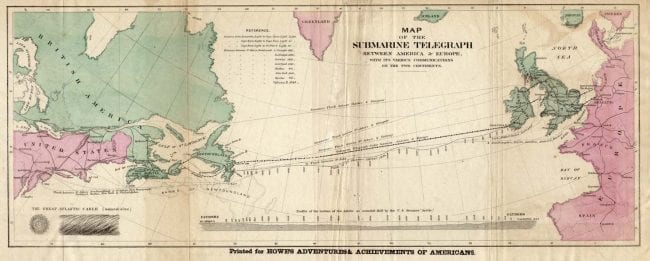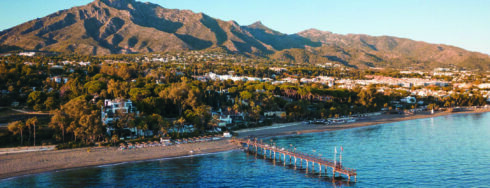‘Glory to God in the highest; on earth, peace and goodwill toward men,’ were the immortal words transmitted by Queen Victoria to US President James Buchanan 160 years ago in the first transatlantic telegraph cable.
It was a landmark moment, speeding up the communication time between America and Europe from 10 days – the time it took to deliver a message by ship – to just 17 hours, sending just a few words per minute.
It took 19 years to lay these first primitive cables – made of copper insulated with gutta-percha and wrapped in hemp – across thousands of miles of Atlantic seabed.

But despite these ambitious beginnings, it wasn’t until 1988 that the first fibre optic cables were laid, connecting the US, the UK and France.
Today, there are over 420 submarine cables in service around the world, stretching a length of over 700,000 miles.
About the width of a garden hose, together they handle 99 percent of global internet activity, relaying live chat across the world’s oceans.
Now the stage is set for Bilbao to become first southern Europe’s, then the world’s data socket.
In 2017, Microsoft, Facebook and telecommunications company Telxius laid the 4,100-mile Marea cable in the Atlantic, linking Virginia Beach, Virginia to Bilbao, Spain.
Its fibre optics can transmit 160 terabits of data per second, the equivalent of 71 million high-definition videos at once.

The first cable to connect the US to southern Europe, it will help facilitate the growing reliance on internet infrastructure around the globe.
“There is no question that the demand for data flows across the Atlantic will continue to increase and Marea will provide a critical connection for the United States, Spain, and beyond,” said Microsoft President Brad Smith.
As 2018 came online, the Cypriot company Quantum Cable announced plans to build another Mediterranean cable that will connect Israel with Spain, also through Bilbao.
The 4,785-mile cable has various drop stations in Cyprus and Greece but will eventually snake its way through the Strait of Gibraltar and into the Atlantic.

At a cost of $200 million, it is expected to be live by 2020.
With these latest connections Bilbao, home of the world-famous Guggenheim Museum and one of 20 cities nominated for Best European Destination 2018, is quite literally set to be the ‘talk of the internet’ on both sides of the Atlantic.
How data cables are laid
- First, the cable is loaded on gigantic reels into the rear of a ship capable of travelling the distance required. Loading the cable can take three to four weeks.
- Then a deep sea plough is dragged from the ship and connected to the cable to bury it in the Atlantic seabed – average depth 3,730 metres.
- While the ship plays out the cable into the sea, repeaters (signal boosters) are placed every 40 to 60 kilometres.
- The plough, modified to navigate trenches and debris, funnels the line along the desired route while a tow line keeps it in the right direction.
- If cables are damaged, then divers or submersibles are sent down to fix it.








